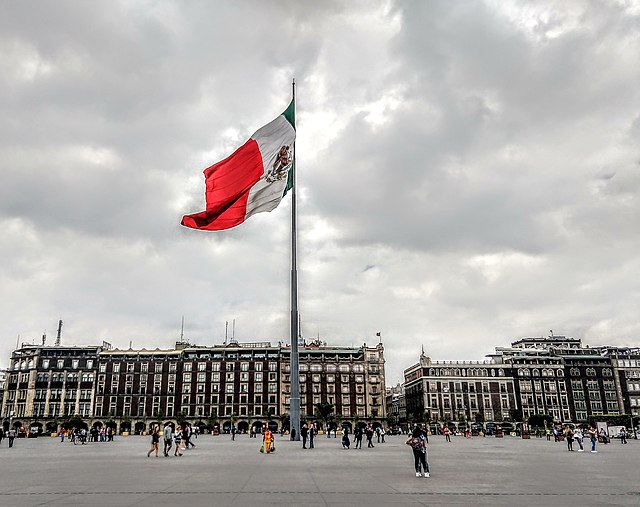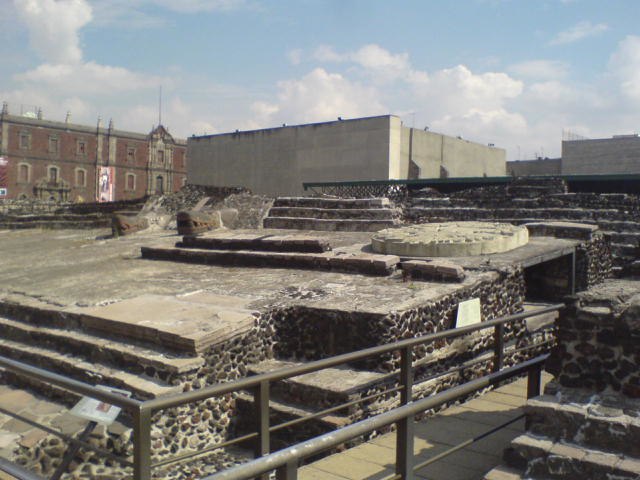The Torre Latinoamericana is a skyscraper in downtown Mexico City. Its central location, height, and history make it one of the city's most important landmarks. It is widely recognized internationally as an engineering and architectural landmark since it was the world's first major skyscraper successfully built on highly active seismic zone. The skyscraper notably withstood the 8.1 magnitude 1985 Mexico City earthquake without damage, whereas several other structures in the downtown area were damaged.
Torre Latinoamericana in July 2015
The Torre Latinoamericana's antenna
Commemorative plaque for the 1957 earthquake
Observation deck
Historic center of Mexico City
The historic center of Mexico City, also known as the Centro or Centro Histórico, is the central neighborhood in Mexico City, Mexico, focused on the Zócalo and extending in all directions for a number of blocks, with its farthest extent being west to the Alameda Central. The Zocalo is the largest plaza in Latin America. It can hold up to nearly 100,000 people.
The Zócalo also known as Plaza de la Constitución with the Mexican flag waving in the center and to the right behind it, the Old Portal de Mercaderes
Fountain with busts honoring Alonso Garcia Bravo, who laid out post-Conquest Mexico City conserving much of the original Aztec infrastructure. Located off Merced Street between Jesus María and Talavera, east of the Zocalo
Mexico City Cathedral
A view of the ruins of the Templo Mayor with museum in background








